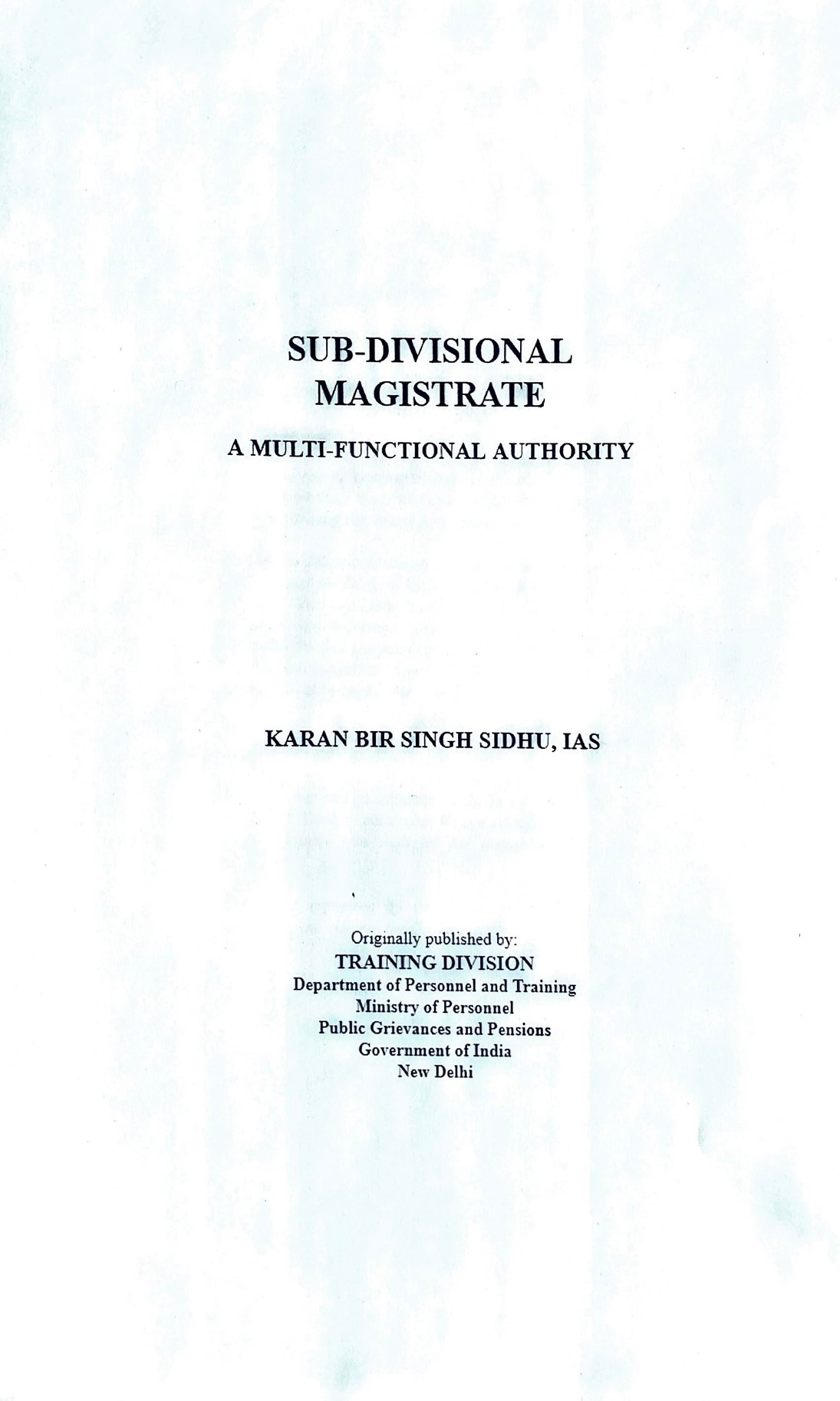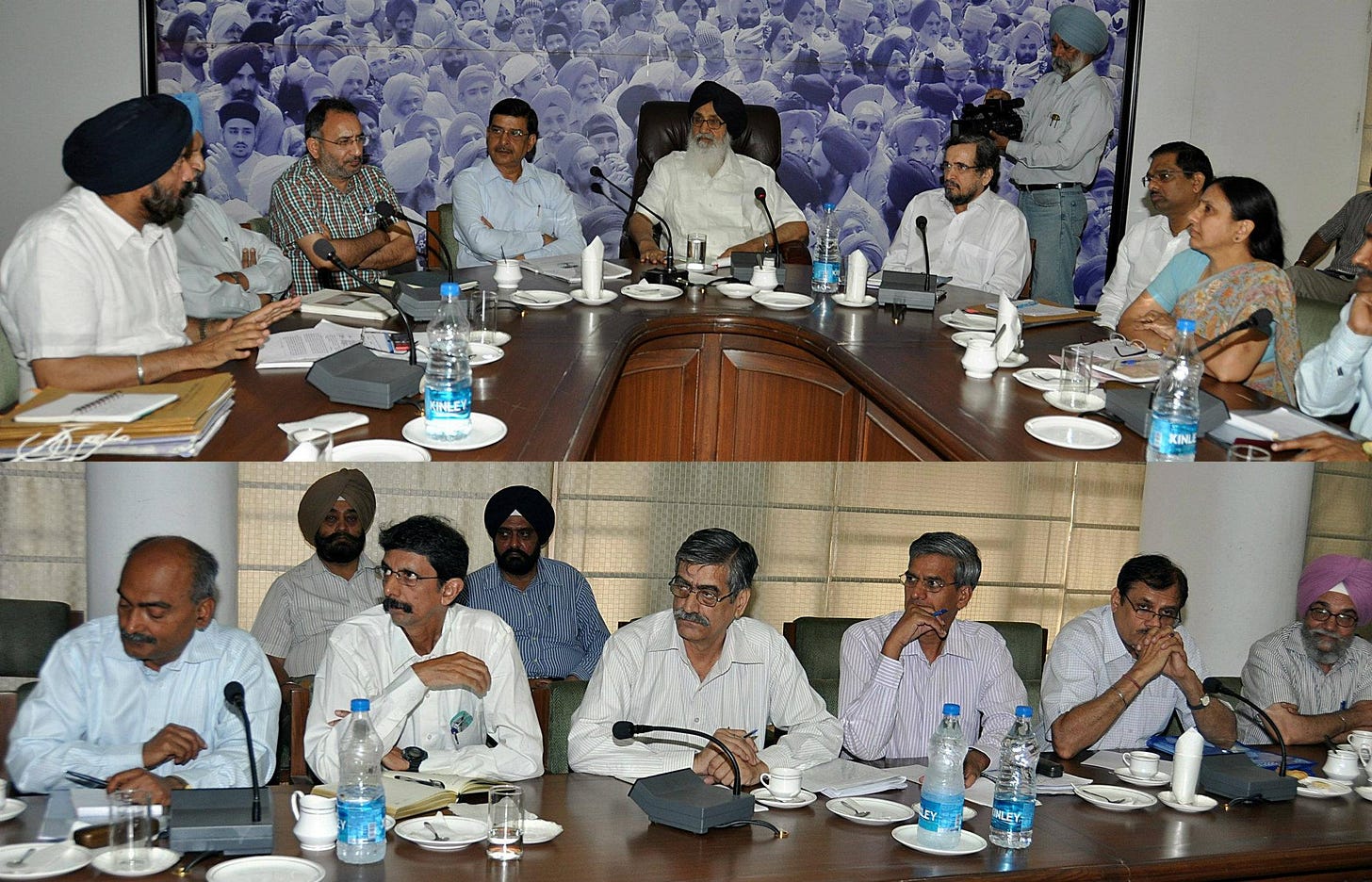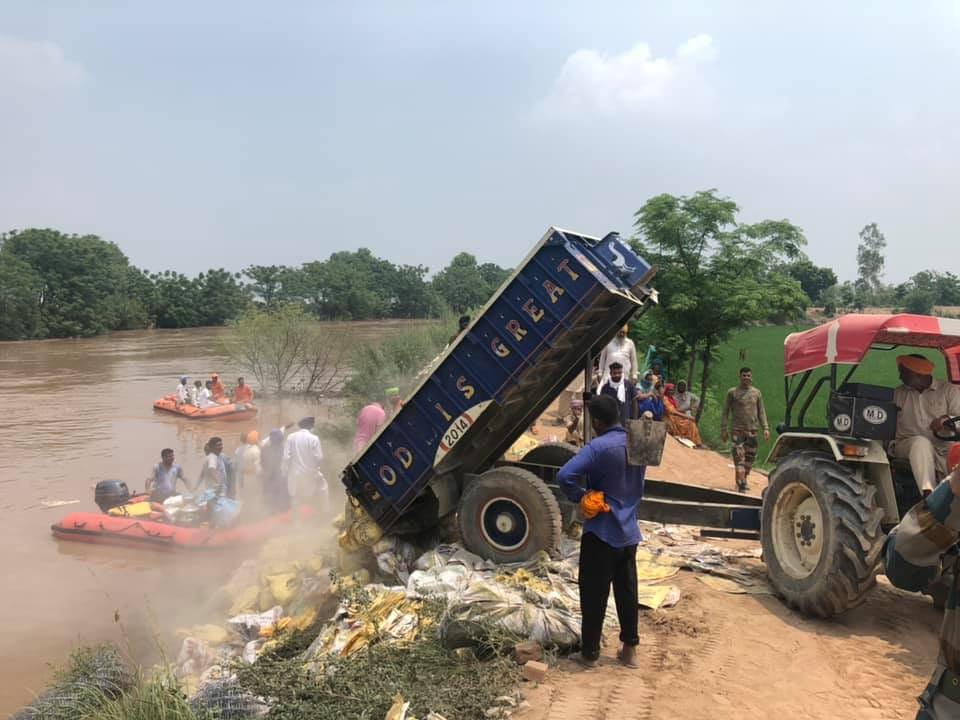Flood Management: Harnessing the Insights from an IAS Officer's Enduring Guidebook
Punjab's Current Floods: Embracing the Enduring Relevance of an IAS Officer's Manual, Retelling the Time-Tested Strategies for Effective Flood Management.
Autobiographical Background: In August 1986, after completing my two-year training, I joined the Punjab cadre of the Indian Administrative Service (IAS) as a new recruit. My first posting was as the Sub-Divisional Magistrate (SDM) of Samrala in Ludhiana district. During my time in this role, I took on a bold initiative—I wrote a booklet titled "Sub-Divisional Magistrate - A Multi-functional Authority." Published in 1991 by the Department of Personnel and Training (DOPT), Government of India, this booklet quickly became a popular publication and an essential handbook for IAS probationers across all state cadres. While it primarily focused on Punjab, its principles were applicable throughout the country. Praised for its practical and pragmatic approach, the booklet is now available as an open-source publication1, accessible to officers, lawyers, scholars, students, and the general public.
Title page of the SDM’s handbook— scanned from the original.
Over nearly four decades, the manual has maintained its relevance despite numerous changes. Even with the introduction of the Disaster Management Act in 2005, its chapter on "Natural Calamities" remains applicable. As Punjab once again grapples with floods in 2023, I feel compelled to share an extract, with minimal editing, from the chapter that specifically addresses flood management2. I hope readers will find this information practical and beneficial for field officers and stakeholders today. Moreover, I encourage everyone to provide suggestions for improvement, as collaboration and continuous learning are vital aspects of effective disaster management. Links to the full chapter PDF and the complete book on Google Drive will be provided for free access.
Briefing a high-level team of the Planning Commission (now ‘Niti Aayog’) at Chandigarh on Punjab’s comprehensive plan to prevent floods. July 3, 2012.
Managing Floods: An Essential Handbook for Field Officers and Stakeholders Introduction: Natural calamities have always posed significant challenges to agricultural states like Punjab, where the livelihoods of many depend on the success of the farming industry. Despite the availability of artificial irrigation systems, the agricultural sector remains vulnerable to the unpredictable forces of nature, such as monsoons and floods. In light of this, the Revenue Department plays a crucial role in coordinating relief efforts to mitigate the impact of these disasters. Recognizing the importance of addressing such challenges, the Government of Punjab has published the Punjab Flood and Other Emergency Relief Manual, which provides comprehensive guidelines for relief work. This article aims to provide a glimpse into the manual's chapter on floods, shedding light on the key aspects of flood management. By sharing this extract, it is hoped that field officers and other stakeholders can benefit from the practical insights offered, even in the present day.
Floods: Among various natural calamities, floods present unique and multi-dimensional problems for local administrations. Unlike droughts or hailstorms, floods often strike suddenly, leaving little time for extensive preparation. The primary focus of the administration during the initial stages of a flood is to rescue and provide assistance to affected villagers and their animals. Once the flood recedes, the relief and rehabilitation efforts can commence. In Punjab, flood-prone areas are identified in advance, allowing for preemptive measures to be taken before the rainy season begins. It is crucial to note that the Revenue Department collaborates with various other departments, including Irrigation & Drainage, Rural Development, and Health, among others. In severe cases, assistance from military authorities may also be sought.
At Amritsar, India-Pak border, in Ranian-Kakkar Sector of Lopoke Police Station of Ajnala tehsil (22.07.2012). emergent work undertaken by the Punjab Drainage department.
Vulnerable Villages: To ensure prompt response and attention during floods, it is essential to maintain a list of highly exposed and moderately exposed villages at the Tehsil headquarters. This list, along with a map indicating their locations, allows for prioritized evacuation and focused relief efforts. When flood warnings are received in advance, the immediate evacuation of these villages becomes a priority.
Flood Equipment: Efficient flood management relies on having a comprehensive inventory of flood-fighting equipment such as boats, oars, and life jackets. Regular physical verification of these items should be conducted before the onset of the rainy season. Additionally, a list of trained individuals in flood duties, as well as other volunteers, must be maintained to ensure a well-prepared response.
Evacuation and Relief Centers: Evacuation centers, typically established in High Schools, Cooperative Societies, or other public buildings in safe villages, serve as temporary shelters for affected individuals. These centers, managed by designated officers or officials, play a crucial role in ensuring the safety and well-being of evacuees. Subsequently, relief centers in larger villages and towns receive individuals from the evacuation centers, providing sustained support during the recovery phase. Adequate medical relief and facilities should be readily available at both types of centers.
Flood Warning: Multiple channels are employed to disseminate flood warnings effectively. The Irrigation and Drainage Department measures river discharge at higher reaches and issues official warnings. Civil authorities, along with officials from various departments, patrol vulnerable points along rivers and convey warnings to local communities. The Police Wireless network and flood control rooms set up in Tehsil Offices further contribute to timely information dissemination.
Plugging Breaches: Immediate action is necessary to address breaches in river embankments and weak spots. Sandbags and voluntary local labor can be mobilized to reinforce the embankments, preventing further damage.
Army in aid of civil authority— Moonak, district Sangrur; plugging breach in River Ghaggar (22.07.2019)
Relief and Rehabilitation: Once rescue operations are complete and floodwaters recede, the focus shifts to relief assessment and disbursement. Similar to other natural calamities, relief work follows established protocols to ensure that affected families receive the necessary support.
Conclusion and Looking Ahead: “The Sub-Divisional Magistrate - A Multi-functional Authority” booklet, which I wrote during my tenure as SDM Samrala, has stood the test of time and remains a valuable resource for field officers and stakeholders involved in flood management and disaster response efforts. I am repeatedly told that its practical and pragmatic approach continues to provide insights into effective flood management strategies. As Punjab confronts floods once again in 2023, I hope that sharing this extract will prove helpful to current field officers and stakeholders, fostering collaboration and enhancing disaster resilience. The complete booklet, including the chapter on "Natural Calamities," is freely available as an open-source publication, allowing for wider accessibility and continuous improvement in our collective pursuit of effective flood management.
Link to my handbook: “Sub-Divisional Magistrate— a Multi-functional Authority”
https://docs.google.com/file/d/1u7Dh21EEeArsAA2kFKm2yQEsJzYRaJgP/edit?usp=docslist_api&filetype=msword
If you find this 287-page booklet useful, feel free to donate. It’s not compulsory but would be a source of tremendous encouragement for me.
Those interested in the reading the chapter on “Natural Calamities” in this guidebook, exactly as it was published, may follow the link below.
https://acrobat.adobe.com/id/urn:aaid:sc:AP:459f9a2e-1b59-40b2-bea3-f2192a7e8a65








The best write up for young officers in the field during floods and in case of any natural calamity. 🙏🙏
Another interesting similitude between India and Perú: we also have floods, but ours are not random, they can almost be predicted, because they heavily depend of a natural phenomena called "El Niño Current", that happens periodically, and you can see it forming months before.
This phenomena exists since forever (existing recorded history well beyond the arrival of the Spanish to South America), but, oh surprise, our government seems completely unable to perform proper planning to avoid the damage to the cities, the fields and even some fatalities.
It is nice to know that at least in your country you have policies in place, and the civil service acts on them.